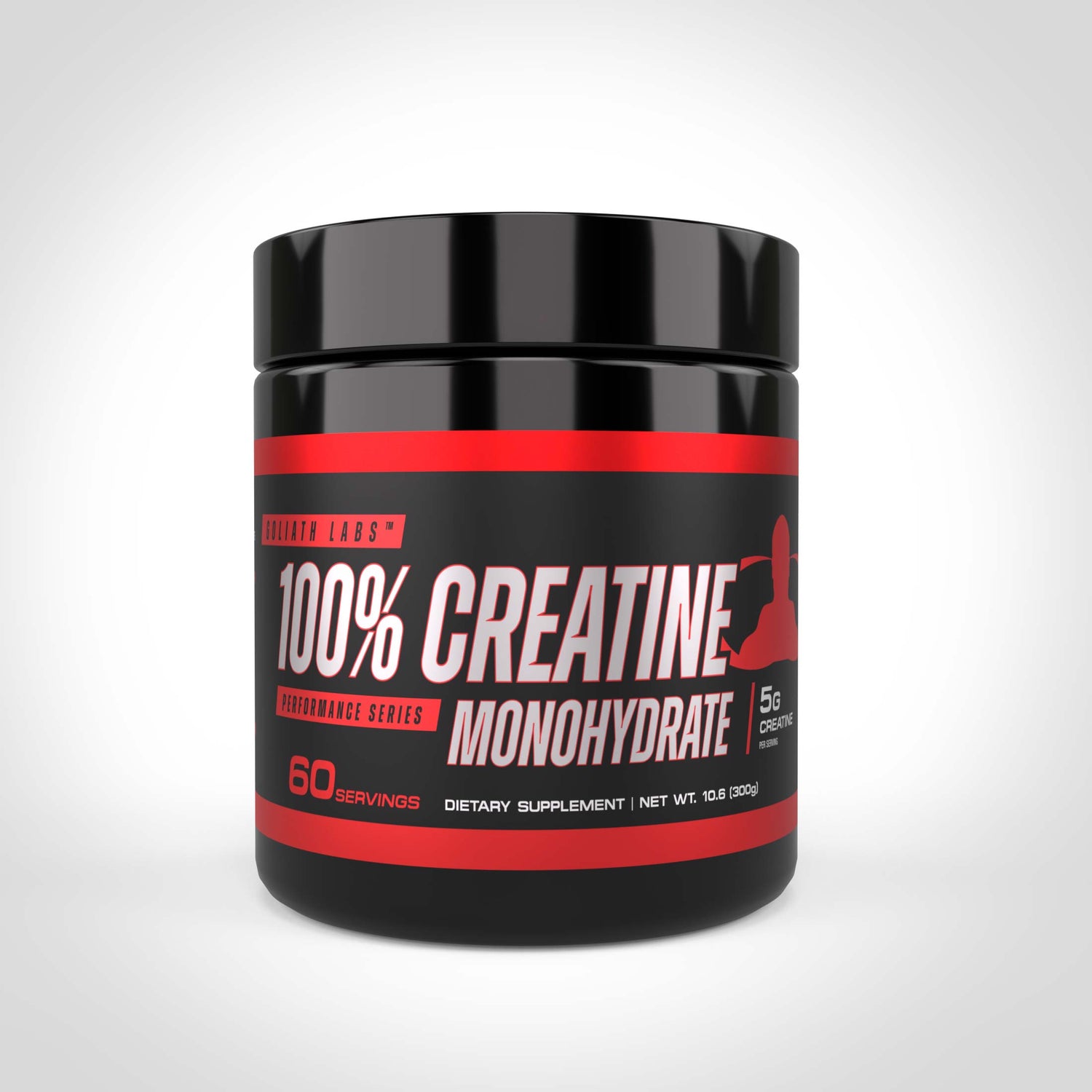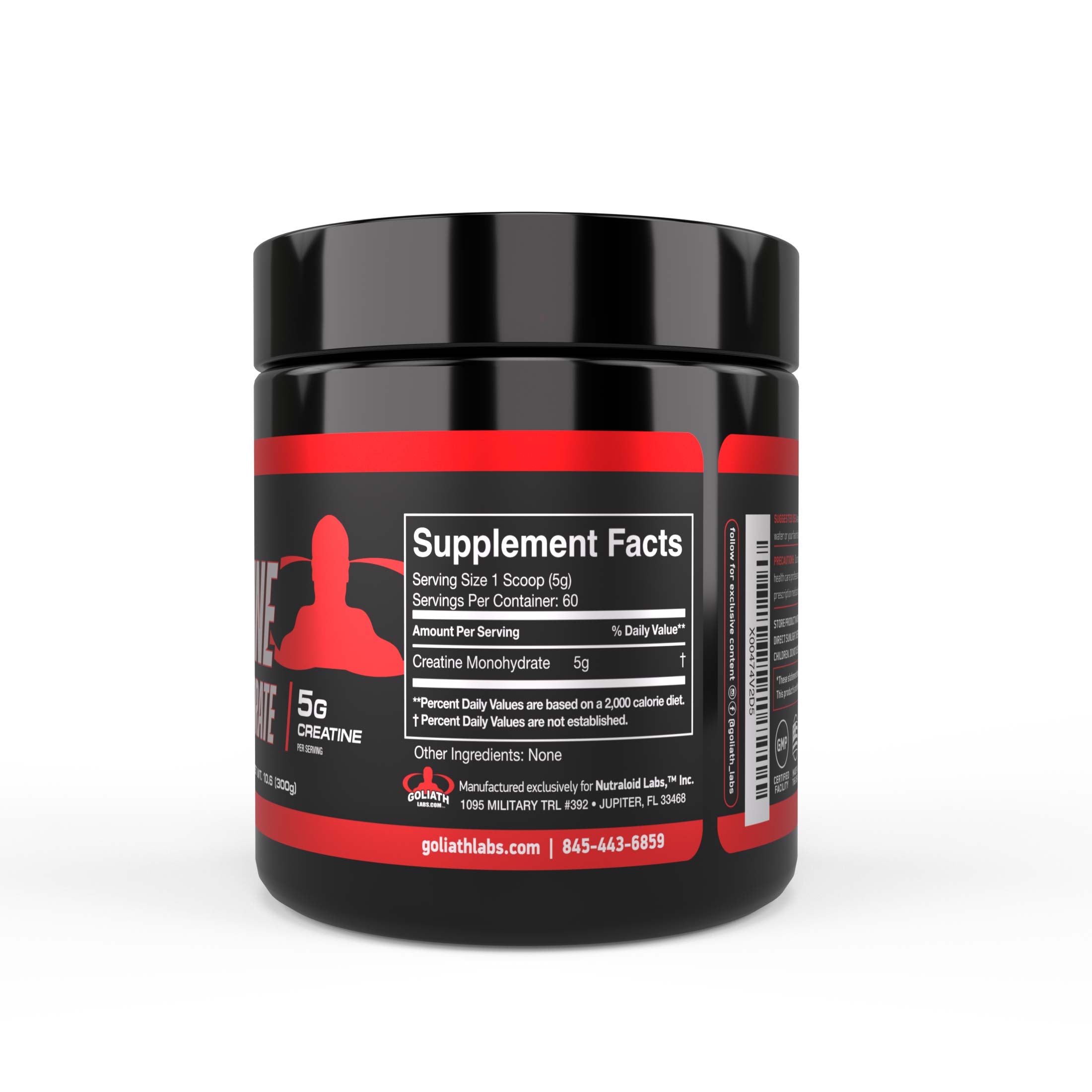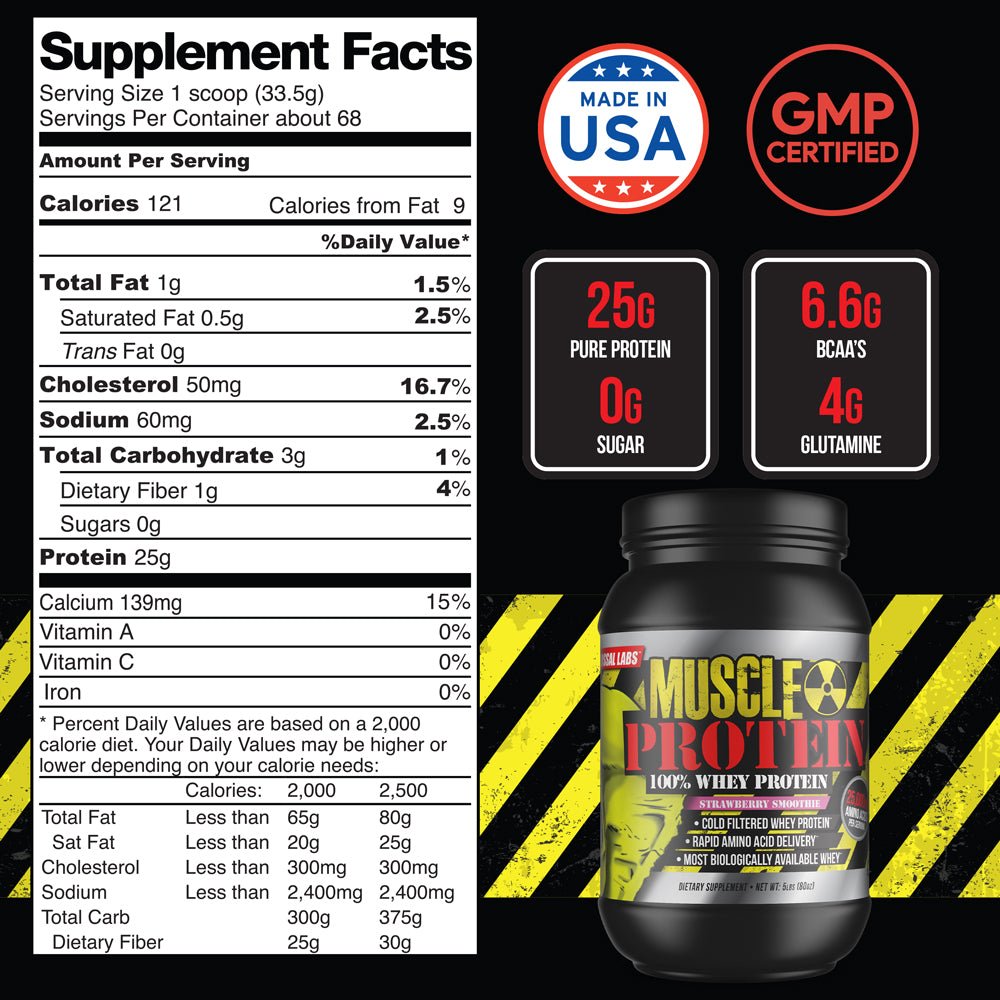Yes, creatine works by itself. You don’t need protein, carbs, or shakes to activate it. Creatine increases ATP regeneration on its own, making it effective when taken solo with just water, as long as dosing is consistent and the product is high-quality.
Creatine functions by increasing phosphocreatine stores in muscle tissue, which accelerates ATP regeneration during high-intensity training.
This process doesn’t require protein, sugar, or any other additive to be effective.
Despite that, the idea that creatine must be taken with a shake or carb-heavy drink persists, likely a holdover from outdated bodybuilding protocols and misinterpreted absorption studies.
This article examines what actually happens when you take creatine on its own, including how it’s absorbed, what dosage makes sense, and how timing factors in.
We’ll also address concerns about bloating, kidney stress, and early weight gain, while clarifying why some users report limited results.
Whether your goal is muscle retention, strength improvement, or cognitive support, creatine can be a standalone supplement, if you understand how to use it correctly.
Why People Are Taking Creatine on Its Own
The shift toward standalone creatine use reflects broader changes in how people approach supplementation. For many, the goal is clarity, fewer ingredients, controlled dosing, and zero unnecessary calories.
Creatine monohydrate, in its pure form, contains no additives, flavors, or sweeteners. It’s a single-compound supplement with a specific physiological purpose: increasing the body’s capacity for ATP regeneration under physical stress.
Some users avoid mixing creatine with shakes or flavored drinks altogether, not for efficiency but preference. Protein powders can feel heavy, sweeteners may cause bloating, and added carbs can interfere with fat loss goals or insulin sensitivity.
Taking creatine with water, or dry, in some cases, is simply a cleaner, more flexible option.
This method also aligns with common dietary strategies.
Those practicing intermittent fasting often prefer to avoid anything that could trigger an insulin response or break the fast.
Others track every calorie and macronutrient, and appreciate that creatine alone adds nothing to their intake beyond its cellular function. Still others want the benefits without relying on multi-ingredient blends.
In all these cases, creatine’s effectiveness remains unchanged, it works independently, provided it’s taken consistently and in a form the body can absorb efficiently.
Does Creatine Work Without Mixing It?
Creatine is fully effective when taken on its own.
It doesn’t require protein, carbohydrates, or any other nutrient to function. Once ingested, it travels through the bloodstream, enters muscle cells, and is stored as phosphocreatine. Its job is to rapidly regenerate ATP during intense physical activity, something it does independently of what it’s mixed with.
The belief that creatine must be taken with sugar is a leftover from early studies that found carbohydrate-induced insulin spikes could enhance creatine transport.
While this is technically accurate, the impact is minimal and unnecessary if you're supplementing consistently. Daily intake leads to full muscle saturation over time, which is the critical factor in performance enhancement.
Whether creatine reaches that point through a protein shake or a glass of water makes no practical difference.
What Happens in Your Body When You Take Creatine Alone?
Once absorbed, creatine converts to phosphocreatine and is stored in muscle tissue.
This stored form acts as a quick-access energy reserve, helping regenerate ATP when you lift, sprint, or perform any high-intensity activity. It’s a direct biochemical function, not one that depends on what you consume it with.
There’s no measurable difference in absorption when creatine is dissolved in water compared to a protein or carb-based drink.
The key variables are consistency and dosage, not the delivery method. Taking it regularly ensures that your muscles remain saturated, which is what drives strength gains, recovery improvements, and reduced fatigue during training.
Does It Matter If You Take It Before or After a Workout?
Several studies have looked at timing, with a few suggesting that post-workout consumption may offer a slight benefit due to enhanced nutrient uptake.
However, these advantages are small and likely irrelevant for non-competitive users.
The far more important factor is regularity. Creatine’s benefits accumulate over time. It’s not a stimulant or pre-workout booster, it doesn’t need to “kick in” before training.
Whether you take it in the morning, evening, or post-lifting, what matters is that you take it daily and in the correct dose.
How to Take Creatine by Itself Without Compromising Results
Taking creatine alone is simple, but technique still matters.
Poor mixing or inadequate hydration can lead to stomach discomfort, and the form of creatine you use plays a role in how well your body absorbs it. While you don’t need to combine it with other nutrients, you do need to take it in a way that supports solubility, consistency, and comfort.
Here’s how to do it right.
Mix It With Water
The most effective and convenient method is to stir or shake creatine into water, cold or warm.
Creatine monohydrate has low solubility in cold liquids, but it will dissolve fully if you mix it with slightly warm water or allow it to sit briefly after stirring. This approach ensures better absorption and minimizes leftover residue at the bottom of your glass.
Micronized creatine monohydrate is preferred. Its smaller particle size improves solubility, reduces sediment, and is generally easier on digestion.
Dry Scooping Creatine?
Dry scooping, pouring creatine powder directly into your mouth without liquid, has gained traction for its speed and simplicity.
But it’s not a recommended practice.
Creatine is highly hygroscopic, meaning it absorbs water. Without adequate fluid intake, this can pull moisture from the digestive tract, leading to cramping, nausea, or bloating.
In addition, dry scooping eliminates the opportunity to hydrate alongside your dose, which is essential when using creatine. Water supports its function in muscle cells and helps regulate body temperature during training.
For best results, dissolve your creatine fully and drink plenty of water with it. Efficiency shouldn’t come at the cost of bioavailability or comfort.
Creatine Dosing: How Much Is Enough When You Take It Solo?
The effectiveness of creatine doesn’t depend on what you mix it with, it depends on how much you take, and how consistently.
Whether you’re adding it to a shake or simply stirring it into water, the dose remains the same. The goal is to keep your muscle creatine stores saturated, not to chase short-term spikes.
A common strategy is the loading phase, where users take 20 grams per day, divided into four 5-gram servings, over five to seven days.
This approach saturates muscle stores quickly, but it’s entirely optional.
Many people skip loading and go straight to a maintenance dose of 3 to 5 grams daily. While this slower route takes longer, typically 2 to 3 weeks to reach saturation, it’s just as effective over time.
There’s also no physiological need to cycle on and off creatine.
Long-term daily use is safe for healthy individuals, with no adverse effects on liver or kidney function when used responsibly.
Once saturation is achieved, continuing with a consistent daily dose keeps your levels steady.
Special Note for Women, Vegetarians, and Smaller Athletes
Body size influences optimal dosing. Individuals with lower muscle mass, particularly women or smaller-framed athletes, often benefit from slightly lower amounts, around 2 to 3 grams per day.
This is sufficient to reach and maintain saturation without overdoing it.
Vegetarians and vegans tend to respond more quickly to supplementation. Because their diets contain less creatine-rich food (such as red meat or fish), their baseline muscle creatine levels are typically lower.
As a result, supplementation produces a more noticeable performance boost early on.
What to Expect When Taking Creatine Alone
Creatine works gradually. Unlike caffeine or pre-workout formulas, it doesn’t deliver an immediate jolt of energy or noticeable pump after a single serving.
Instead, its effects build over days and weeks as your muscles reach full saturation. When taken consistently, even on rest days, creatine monohydrate produces reliable, measurable improvements in physical performance, recovery, and, in many cases, mental clarity.
Here’s how that timeline typically unfolds.
Early Effects (Week 1–2)
In the first phase of supplementation, most users notice a modest increase in body weight, usually one to three pounds.
This isn’t fat gain or muscle growth in the traditional sense; it’s water retention within muscle cells. Creatine draws water into the muscle tissue, improving cellular hydration and giving muscles a denser, more volumized appearance.
This hydration is not just cosmetic. It creates a more favorable environment for protein synthesis and recovery, setting the stage for long-term gains.
For some, this early weight increase leads to concern, but it's both expected and beneficial.
If the scale shifts upward while your training intensity and muscle definition improve, the process is working as intended.
Performance Boosts (Week 3+)
As your muscles become fully saturated, the performance-enhancing effects of creatine start to take hold. Workouts feel more explosive.
You may notice increased power output during compound lifts, an extra rep or two per set, and faster recovery between sessions. These improvements aren’t dramatic overnight changes, they’re incremental advantages that accumulate.
Athletes training for strength, hypertrophy, or sprint performance will feel this most.
That added 5% in endurance or workload compounds over weeks, translating into greater muscle stress, better adaptations, and more visible progress. Even casual lifters report feeling more capable during sessions once creatine levels are stable.
Mental and Cognitive Benefits
Creatine isn’t just for muscles. It also plays a role in brain energy metabolism, particularly in tissues that demand high levels of ATP.
Some users report enhanced mental clarity, reduced brain fog, and improved resilience to fatigue, especially during periods of sleep deprivation or elevated stress.
While these cognitive effects vary by individual, they are most common among those with lower dietary creatine intake or higher mental stress.
In these cases, creatine functions as both a physical and neurological performance enhancer, supporting better training and clearer thinking in parallel.
Creatine Works by Itself, But You Want the Right Product
Creatine doesn’t need sugar, protein, or a flashy delivery method to be effective.
What matters is purity, dosing accuracy, and daily consistency. Whether you stir it into water, add it to your oats, or take it solo with a full glass of water, the results depend on how well your body saturates and maintains its creatine stores over time.
That’s why the quality of your creatine matters more than how you consume it.
Goliath Labs’ 100% Creatine Monohydrate is micronized for optimal solubility, making it easier to mix, easier to absorb, and gentler on digestion. We don’t use fillers, proprietary blends, or label tricks, just pure, clinically supported creatine that delivers results.
If you want a straightforward supplement that works without overcomplication, creatine taken by itself is a smart, proven choice. Visit our website today and join thousands of athletes, lifters, and everyday performers who trust Goliath Labs to fuel their journeys.



